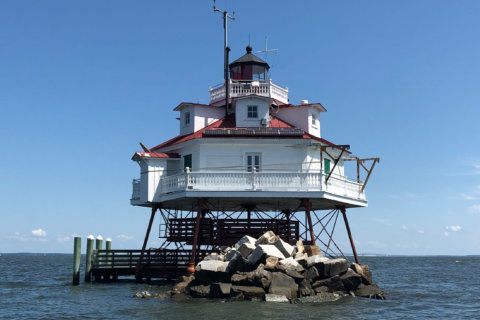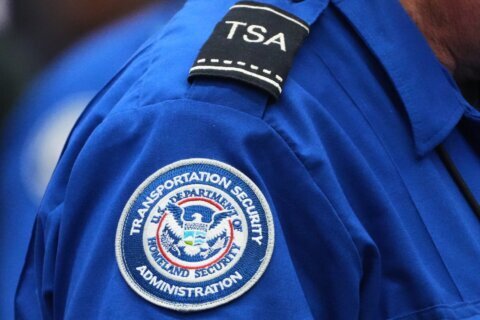This week, WTOP takes you from the bottom of the bay to the picnic table in our four-part series Claws and Effect: The murky future of the Chesapeake Bay blue crab. Listen on air and read it online. This is Part 2. Read Part 1 here.
The seafood industry around the waters and tributaries of the Chesapeake Bay has seen better days, but it’s also had worse days. While things have rebounded to some degree in recent years, there are increasing concerns about what the future might hold.
Those concerns exist within the Maryland Department of Natural Resources, as well as on the boats used by watermen who harvest crabs by the bushel. It’s not just juvenile crabs that are disappearing, it’s the people who harvest the adult crabs, too. So while things are fine now, the future of the popular crustacean might be as murky as some of the muddy bottoms they traverse.
Mystery lurking in the water
Earlier this year, the state of Maryland estimated the crab population in the bay to be around 317 million. In 2023, it was estimated to be around 323 million.
Adult crabs, both male and female, also saw population declines, with the adult female count falling from 152 million to 132 million. While it’s a significant drop, it’s still well above the 72.5 million that’s considered the minimum threshold to sustain the population.
The future of the crab population, the number of juvenile crabs, has been considered below average for the last four years. That’s baffling scientists.
“Technically, the population is fine,” said Mandy Bromilow, who is the blue crab program manager for the Maryland Department of Natural Resources. “It’s just that the concern that we have is where we’re seeing this sort of mismatch in the amount of females and the amount of juveniles.”
Right now, she doesn’t believe it’s because watermen are overharvesting the crab population. But that just means there’s a mystery lurking in the water.
“What should be adequate female numbers aren’t translating into the low or into higher juvenile abundance,” she said. “The trends that we’re seeing with low recruitment (the term used to describe the reproductive patterns of crabs), in particular, are a little bit concerning because we don’t know what’s causing that.”
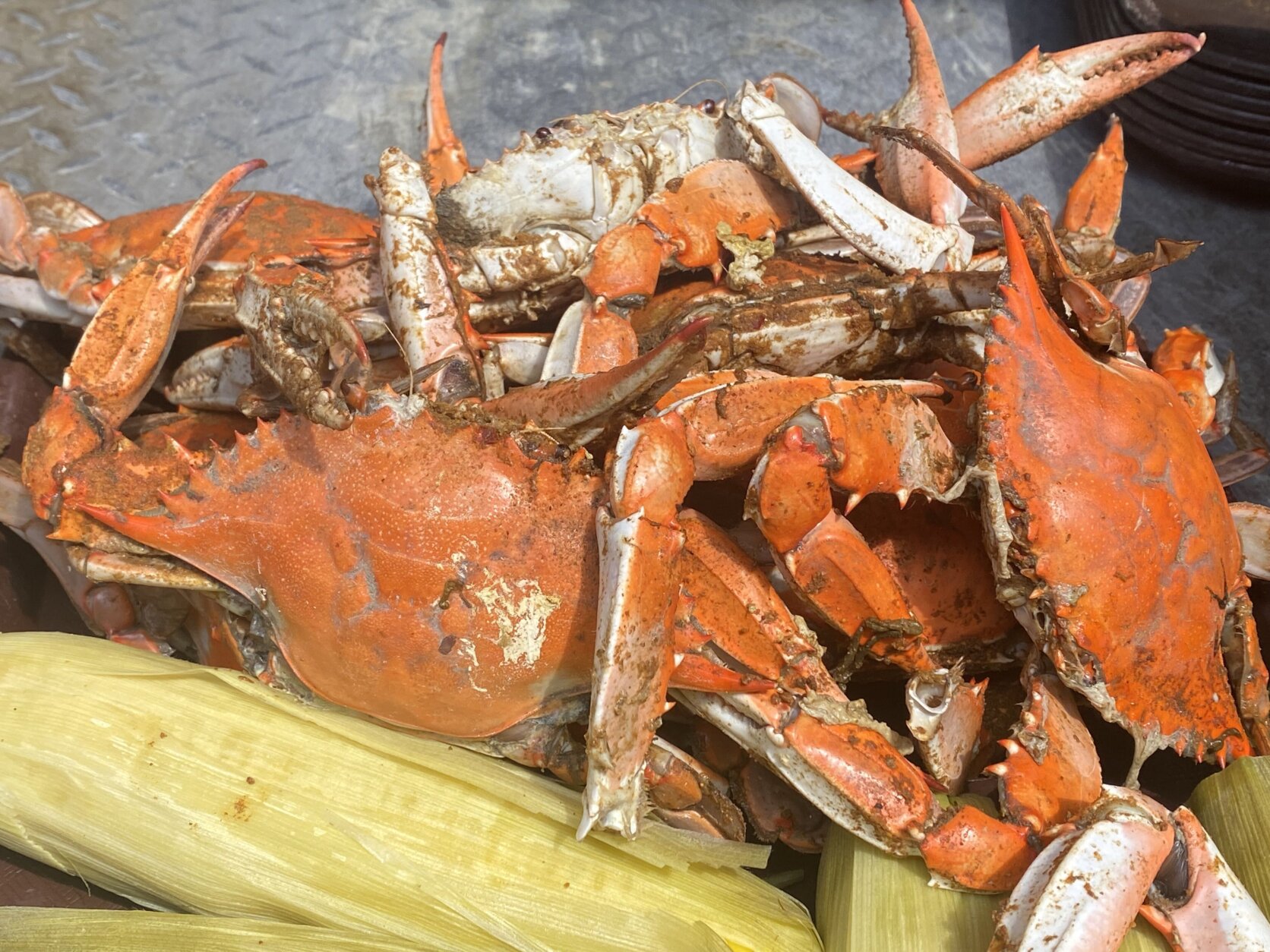
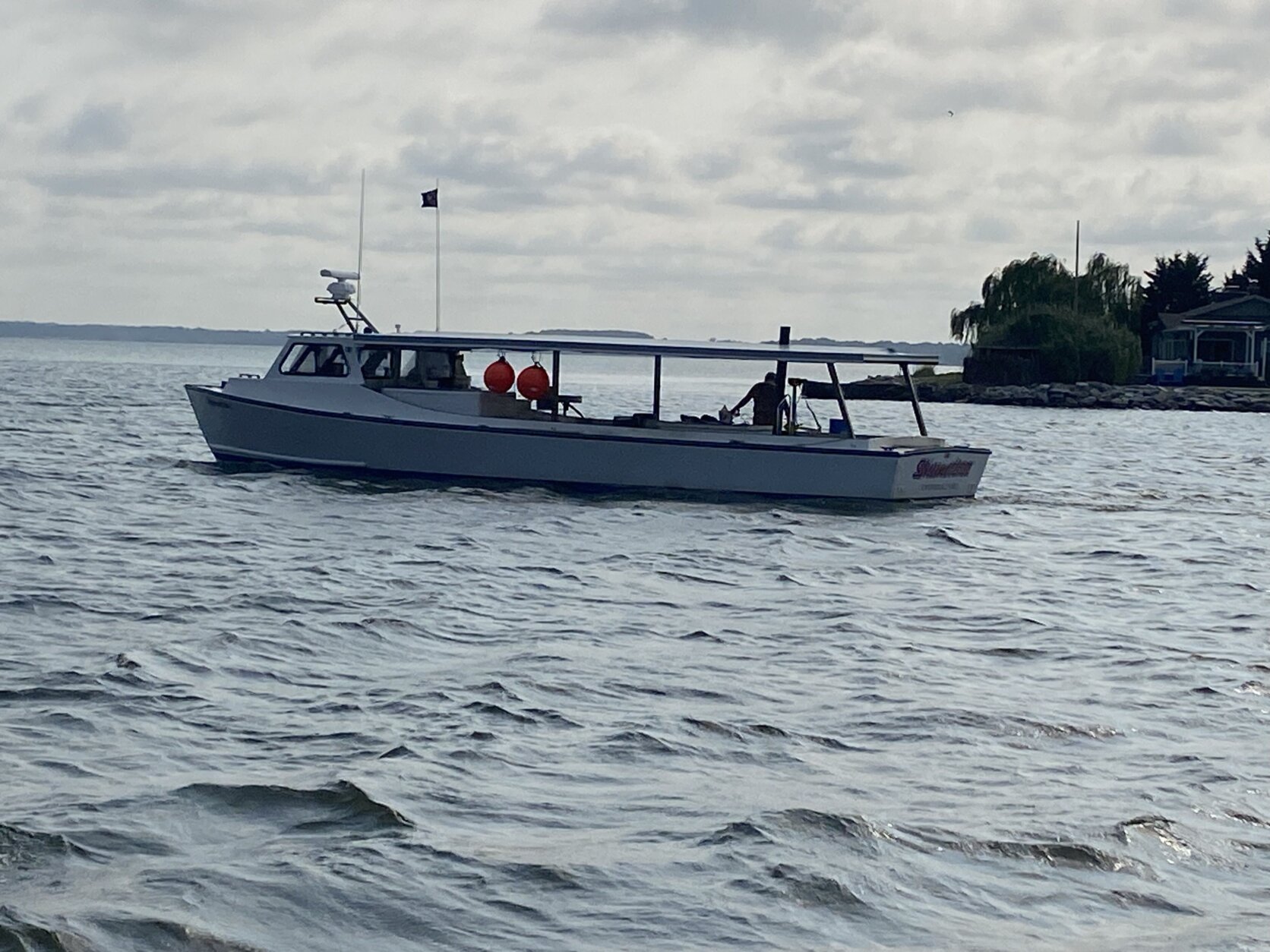
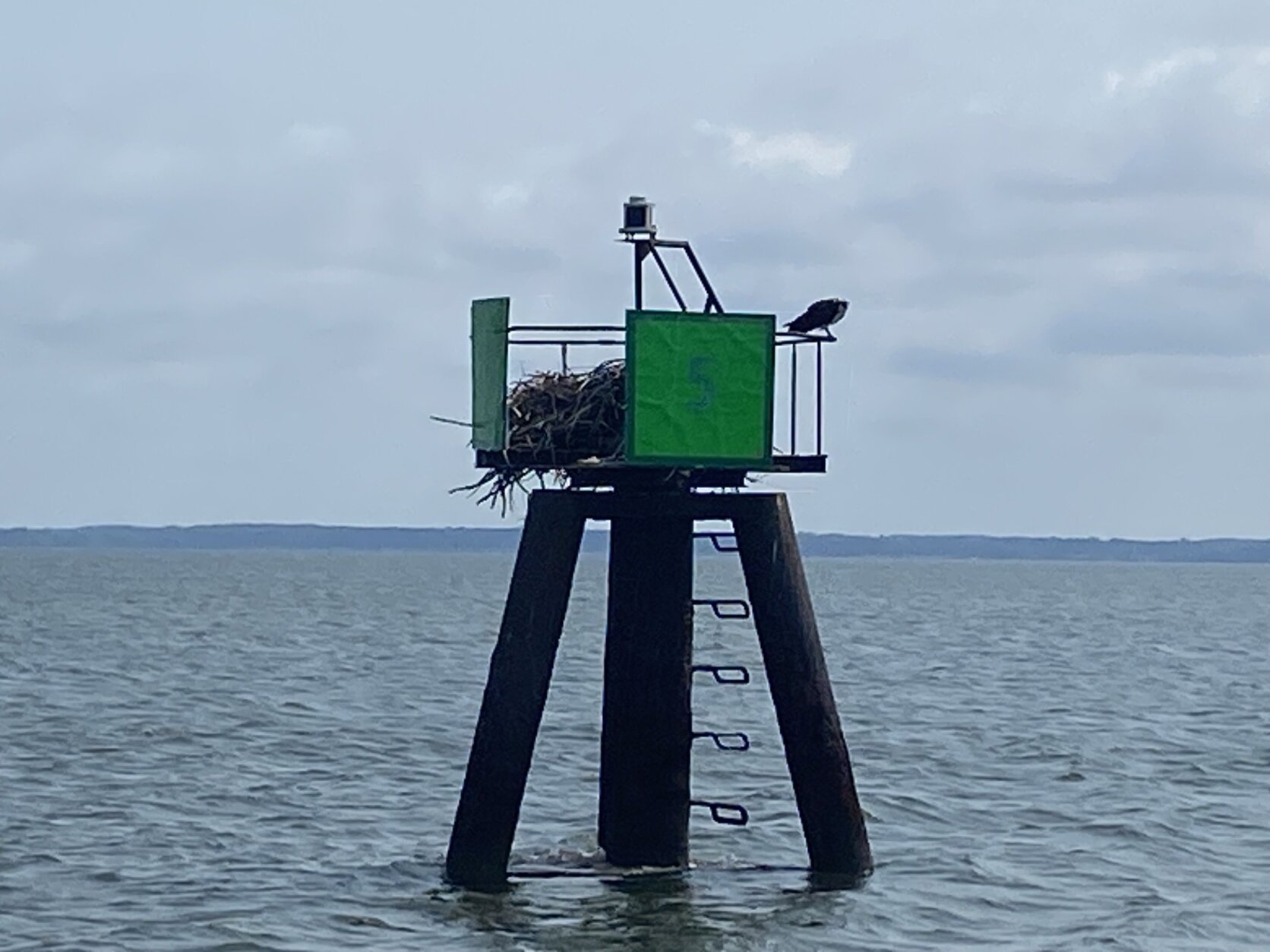
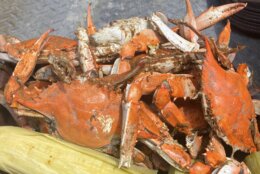
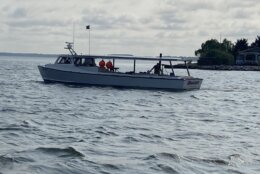
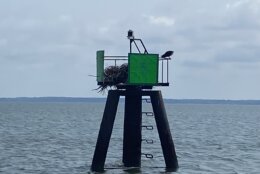
But there are some theories.
When female crabs go to spawn, they travel from Maryland all the way down to around the mouth of the Chesapeake Bay. Their eggs are released and juveniles go through larval stages in coastal waters, then winds and ocean currents carry them back into the Chesapeake Bay, where they become juvenile crabs. Eventually, assuming they don’t end up in a bigger fish’s belly, they become adult crabs. But they can’t get there on their own.
Storms and predators could threaten crab population
“If the weather patterns and storms push those juveniles or larval blue crabs out into the ocean, rather than into the bay, we’re sort of losing those blue crabs to our population (in the) Chesapeake Bay,” said Bromilow.
Similar concerns are held by Jason Ruth, who owns Harris Seafood Company, a processing facility in Grasonville.
“A lot of going forward is based on environmental factors,” said Ruth. “If you have storms where the crabs are actually migrating to, if they’re migrating out in the ocean, do they come back into the Chesapeake Bay the following year?”
- Read Part 1 of “Claws and Effects”: The murky future of the Chesapeake blue crab
- Read Part 3 of “Claws and Effect”: What’s driving Chesapeake Bay watermen away?
- Read Part 4 of “Claws and Effect”: Everyone thinks there’s only one right way to eat a crab. What if they’re wrong?
But he’s most worried about predators living in the waters with the crabs.
“The biggest problem we have is invasive species that are eating up the crabs when they’re in their most vulnerable state,” said Ruth. “The blue catfish — it’s getting a lot of media attention right now, and it needs to, because it is a species that’s uncontrolled. Its population is rising rapidly and getting to a point that it’s going to cause some serious damage here in the near future.”
It’s one species of fish that scientists know likes to eat crab (as much as any group of friends with a picnic table and a cooler full of beer). But it still isn’t known how much of a problem the blue catfish presents.
This video is no longer available.
“We know that they’re eating juvenile blue crabs, or blue crabs in general,” said Bromilow. “We just don’t know how much. That’s kind of the issue where we don’t have enough data.”
There’s also concern that warming waters could make the Chesapeake Bay more inviting to other fish species like the red drum.
“We know puppy drum are in grass beds, eating juvenile blue crabs,” said Bromilow. “With the longer warm season, they might have more of an opportunity to be feeding on those juveniles.”
Are Chesapeake Bay crabs OK for now?
For now, those are all just theories shared by both scientists and at least some watermen — two sides that don’t always agree on everything. But currently, population levels are in a good place, and Ruth said what looked like a really dismal season at the start of the summer has really picked up.
So in the short term, at least, everyone is content. The information available now suggests that could drastically change down the line.
“We need that high recruitment to keep that population coming back every year,” said Bromilow. “That could be a problem in the future and we just don’t know what’s causing that.”
It’s entirely possible that what’s known as a “stock assessment” no longer offers scientists the most accurate information about the crab population.
Back in the spring, the state began a new stock assessment of the crab population, which is a series of models and analytical formulas used to determine what the future might hold. They are complex and take into account things like what the presumed mortality rates of crabs really are, which can be influenced both by predators as well as harvests by watermen. It’s then applied to the winter dredge surveys that count the number of crabs currently in the bay.
“We can say there’s a specific predation rate and plug that into our model, and then it will show us what affect that is having on the population,” Bromilow said.
But if those numbers are off, then it skews all the other data that are used to predict the future.
“Are we assuming the right amount of natural mortality is removing crabs in the population? Or are we assuming the recruitment (of new juvenile crabs) is coming in at this specific rate?” she asked.
The last time all of that was reassessed was in 2010. The updated stock assessment formulas won’t be finished until the spring of 2026.
“Based on the current framework, the numbers are OK,” said Bromilow.
That might not be the case later on though.
In Part 3 of our series, we talk with a waterman about the future of the aging industry.
Get breaking news and daily headlines delivered to your email inbox by signing up here.
© 2024 WTOP. All Rights Reserved. This website is not intended for users located within the European Economic Area.



